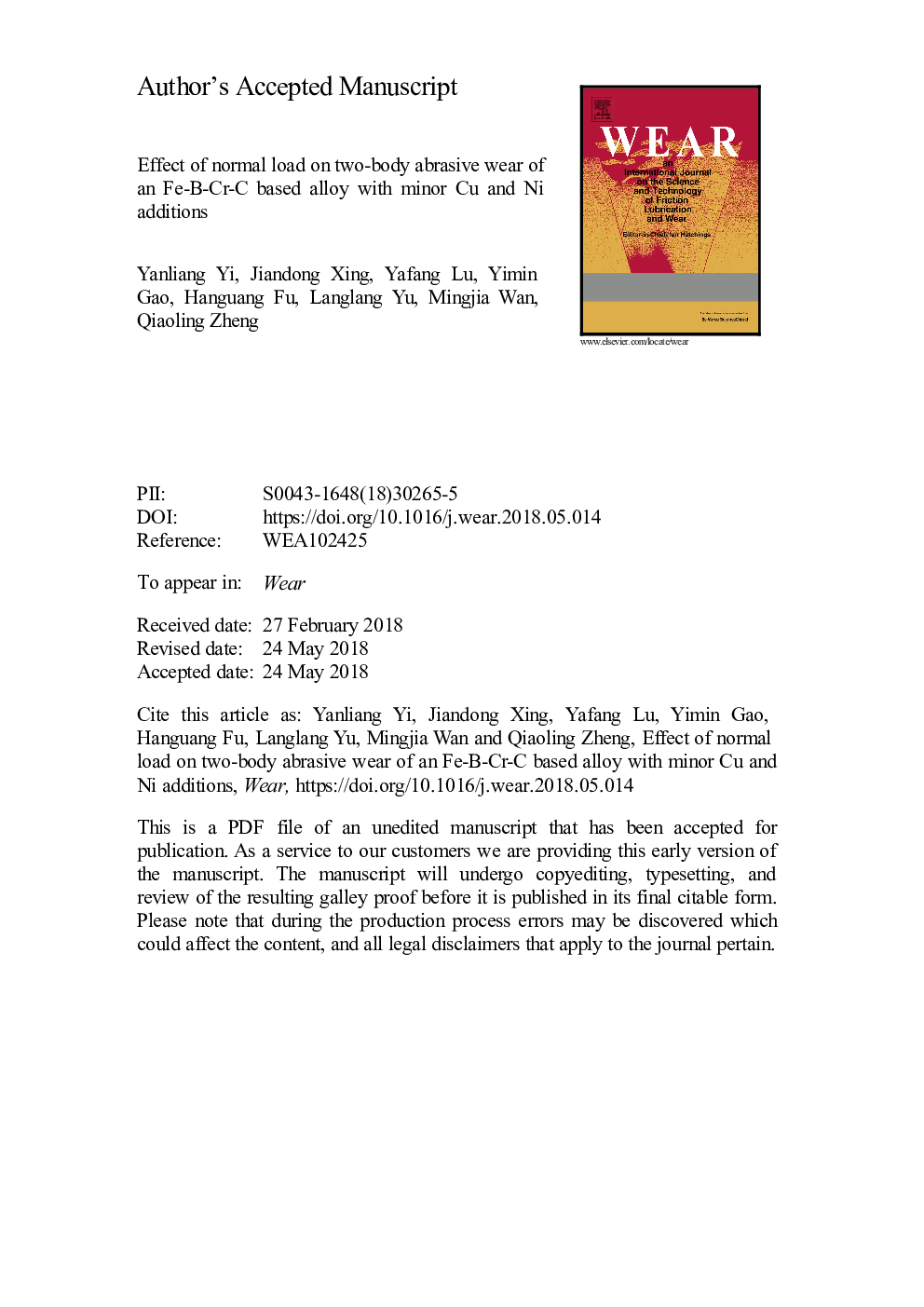| Article ID | Journal | Published Year | Pages | File Type |
|---|---|---|---|---|
| 7003799 | Wear | 2018 | 21 Pages |
Abstract
During the abrasive wear process of Fe-B alloy, the Fe2B resists the abrasive and protects the matrix from being shoveled off; in return, the matrix supports the Fe2B against fracture. Therefore, there is a need to characterize the effect of matrix on the abrasion resistance of Fe-B alloy. Two-body abrasive wear tests of as-cast Fe-B alloys with various matrix contents are performed on a pin-on disk tribometer at the normal load ranging from 7â¯N to 30â¯N. At the load of 7â¯N, the abrasion resistance of Fe-B alloy increases with increased Cu and Ni contents, especially for the high Cu and Ni additions (namely, the Vm/Vp becomes greater than 3.7 (where the Vp and Vm show the volume fractions of pearlite and martensite, respectively)), and the wear mechanism changes from micro-ploughing to micro-cutting. Nevertheless, the abrasion resistance of Fe-B alloy decreases with the increase of normal load. At the same time, the wear mechanism changes from micro-cutting to a mixed mode of micro-cutting and micro-ploughing. The wear mechanism of Fe-B alloy can be described as follows: with the decrease of Vm/Vp or the increase of normal load, the M2B-type boride will be crushed by a perpendicular force F⥠owing to a high degree of deformation, and the broken M2B debris will be eradicated and dislodged by the Al2O3 abrasives, then the abrasion resistance of Fe-B alloy will be reduced greatly. Accordingly, it has been proven that the Fe-B alloy with martensite matrix or high Vm/Vp matrix can be effectively subjected to severe abrasive wear in a low contact stress.
Related Topics
Physical Sciences and Engineering
Chemical Engineering
Colloid and Surface Chemistry
Authors
Yanliang Yi, Jiandong Xing, Yafang Lu, Yimin Gao, Hanguang Fu, Langlang Yu, Mingjia Wan, Qiaoling Zheng,
